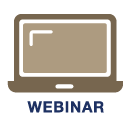|
Join Our List
 |
|
Robin Novak, RN, CIC
|
 |
|
Director of Infection Prevention
and
Endoscopy
636.875.5088 ext. 101
|
|
This Month's Training Opportunities
|
 |
January
Multiple Dates:
"WISH: Wash-IUSS-Sterilization-HLD"
Several new Infection Prevention titles added this month.
|
|
Surveyor's Corner
|
 |
|
Cathy Montgomery, RN, CASC
AAAASF Surveyor
636.875.5088 ext 102
I want to build upon Robin's article in last month's newsletter are newly published statistics re safe injection practices.
Every year AAAHC publishes a summary of citations that tracked the preceding year, from June to June. For 2014-2015, for the first time, Safe Injection practices made the list at roughly 12%. It is unsettling that this year's report (2015-2016) once again illustrates ASC's are not following safe injection practices.
This time, up roughly to 17% of all surveys! Because of the number of facilities surveyed by AAAHC, I think this is likely a fair representation of ALL ASC's survey activity. So, even if you are not an AAAHC facility, a lesson can be learned here. I would urge you to assess and problem solve if your facility is using the any of the following unapproved processes:
1. SDV being shared between patients - including Propofol 2. MDV being accessed in patients care areas, including the OR, and not discarded after that pt. use 3. Not wiping the top of vials with alcohol before access 4. Capped syringes being transported in pockets 5. Pre-drawn meds not labeled 6. Meds with similar names being stored next to each other
This is low hanging fruit for any surveyor and could set the stage for a rocky road to say the least! This list applies to staff, providers, and most definitely your anesthesia providers.
|
|
|
|
Volume 1, Number 3
|
January 2017
|
 |
With the start of our New Year 2017, we want to address a couple very important and trending issues in the world of ambulatory surgery centers, sterilization, reprocessing and infection prevention. As well, we are excited about introducing our new Infection Preventionist Mentorship Training Program to be directed, managed and taught by Robin Novak. LEARN MORE about this new program.
ABOUT ROBIN NOVAK, RN, CIC
Registered Nurse, Certified Infection Preventionist dedicated to disease prevention and high quality healthcare. Strong decision maker who understands the importance of patient, visitor and staff safety following evidence based best practices.
Driven and compassionate healthcare professional with 30 years hands-on experience in fast-paced ambulatory surgery center and hospital environments. Accountable and responsible with an additional focus on Quality Assurance Process Improvement
.
In the past, Robin has served as the SGNA Carolina Chapter President, involved in SGNA Practice Committee as well as a Regional Committee member. Robin has been active with APIC and is a current member of APIC PALMETTO. Robin was prior employed at the Ambulatory Surgery Center of Spartanburg since 2004 and held roles of Endoscopy Nurse, Endoscopy Charge Nurse and most recently the Quality Assurance Process Improvement Coordinator. Robin has worked on several infection prevention projects for Excellentia Advisory Group including a key role as a faculty speaker at our annual Infection Prevention Strategies for ASC's conference in Las Vegas.
|
|
STERILIZATION AND REPROCESSING WOES
|
|
By Robin O. Novak, RN, CIC
Sterilization and reprocessing remains a topic of intense discussion at many ASC's. This is for good reason. Patient safety starts and ends with properly reprocessed, maintained and sterilized equipment. Surveyors are consistently looking for lapses which can lead to unfavorable citations.
The problem? Many facilities have staff reprocessing equipment without the proper training. It's not the staff's fault. Most have been placed into the reprocessing role with the understanding they will learn as they go. But the question remains, how will staff learn as they go without proper training? The old adage of "we don't know what we don't know" applies.
There are so many advantages to training. Not only will it enhance reprocessing and sterilization activities, but it will enhance staff understanding of principles. Staff will be able to recognize discrepancies and subtle signs of instrument deterioration. They can apply knowledge to assess effective decontamination processes during the inspection phase.
Those in the reprocessing department are no longer there to wrap instrument trays like Christmas presents. Their role is crucial to positive patient outcomes. They deserve the proper training and recognition to achieve expected task performance. Infection preventionist and leadership have a responsibility to take proactive roles to contribute to the educational needs.
Take the test. If you discover even one question in which the answer escapes your knowledge base, you may want to participate in the upcoming
"WISH: Wash, IUSS, Sterilize and High Level Disinfection" webinar.
WEBINAR LINK. As a healthcare provider, you ARE responsible for meeting established guidelines.
1) How is a piece of aluminum foil used in the decontamination room?
2) What does a purple-black discoloration on an instrument mean?
3) Why must a peel pack seal be sealed 50% on the paper and 50% on the plastic?
4) What is the significance of a sharpie marker?
5) Inspection after cleaning is a vital step in the reprocessing protocol. What should staff be looking for?
6) This process is not intended to replace insufficient instrumentation
7) Rigid containers must be validated for this process before use. What is the process?
8) Some of these chemicals require periodic monitoring for employee safety.
|
| Critter Craze |

By Robin O. Novak, RN, CIC
Guess what time of year it is? It is influenza season. That is right, from October 1, 2016-March 31, 2017 facilities should be tracking influenza vaccination for all staff, physicians, licensed independent practitioners, students, and volunteers. This requirement is for any of the disciplines that are in your facility for 1 day. Reporting to CMS will be due by May 2017.
Why all of the hubba-baloo about influenza vaccinations? Influenza virus circulates throughout the United States usually late fall to early spring. Most that become infected will recover without incident. However, significant illness and even death is common in older adults, young children, pregnant women, and those with chronic medical conditions.
There are two (2) types of influenza virus, A and B which cause human disease. The influenza A virus can cause a pandemic more readily than influenza B. However, both have the capacity to cause pandemic disease. Although the exact timing of onset, peak and end of influenza season varies, seasonal influenza is typically during the late fall to early spring.
Each year, I hear someone mention they have had the flu. But come to find out, they are confused as to the symptoms of influenza. Influenza is a contagious respiratory illness. Therefore, you can understand how the elderly and very young children with compromised respiratory systems can quickly deteriorate and end up hospitalized or even in death. Key symptoms of influenza are:
- Fever or feeling feverish/ chills (not everyone will have a fever)
- Cough
- Sore throat
- Runny or stuffy nose
- Muscle or body aches
- Headaches
- Fatigue (tiredness)
- Vomiting and diarrhea are more common in children
True influenza is spread person to person. It can travel up to six (6) feet away through droplets as people with flu cough, sneeze, and even talk. Sometimes, the influenza virus can transferred from the environment to a host person when they touch their own mouth or nose.
What can we, as healthcare providers do to protect ourselves, our families and our patients?
1) Avoid sick people and if you are sick, STAY HOME!
2) Wash your hands often preferably with soap and water, but when not available alcohol based hand rub will suffice.
3) Do not share linens, eating utensils, and dishes with those that are sick without thoroughly washing first.
4) Frequently touched surfaces in the environment should be cleaned and disinfected at home, work, and school, especially if someone is sick. Finally,
5) get vaccinated!
As I mentioned, the flu is contagious. Therefore, it is concerning that a healthy adult can infect another person beginning one (1) day before they develop symptoms and up to 5-7 days after becoming sick. Children can pass the virus for 7 days. This means you can pass the flu virus to someone before you know you are sick.
For the 2016-2017 season, the CDC is recommending the use of the inactivated influenza vaccine or the recombinant influenza vaccine. The nasal spray flu vaccine should not be used. The vaccine is recommended for everyone 6 months and older. Once vaccinated, it will take approximately two (2) weeks for the protection to set in.
|
| GI Corner |
|
By Robin O. Novak, RN, CIC
Endoscopy centers across the United States have been questioning a practice which has been ongoing for numerous years. That is the use of simethicone administered via the endoscope lumen. A recent evidence-based article published in the AJIC journal, November 2016, finds residual simethicone in the lumens of an endoscope after reprocessing.
This article is igniting a flurry of activity among providers. What do endoscope manufacturers' say? What alternatives do we have? What are our peers doing? At least one manufacturer has a specific statement regarding the use of simethicone.
As an infection preventionist, I would recommend facilities cease the use of simethicone. Any residual product that is left in a lumen after reprocessing can lead to biofilm and increased microorganisms. These biofilms and micro-organisms can potentially be readily transferred to the next patient. As you know, cross-contamination is always high on the list of prevention activities.
|
|
|
Infection Prevention Word Jumble
|
CAN YOU UNSCRAMBLE AND FIND THE CORRECT WORD?
YOUR ANSWER:
INIARSLZOTEIT __________________________
FINSIDCEITNO _________________________
PENITSCONI _________________________
LEPARCNE _________________________
UMALNA _________________________
RHEWAS _________________________
CUILNTORIAS __________________________
WEBIO KDIC ____________ _____________
EPLE HUPOC ____________ _____________
SUSI __________________________
EGDLYUARHELTED __________________________
ONMRITO __________________________
PTA __________________________
LOFIMBI __________________________
OCMIRGONMIRAS __________________________
EMSAT __________________________
NEYETELH XEODI _____________ ____________
GDIRI NATCONIRE _____________ ____________
|
|
If you are in need of assistance with your infection prevention program, Robin will be able to assist with everything from setting up your program, training your Infection Preventionist, writing or editing Policies & Procedures or just simple telephonic consultation. Robin is taking on-site requests for 2017 at this time. Secure a date on her calendar now.
Please let me know how we can help.
Sincerely,
Cathy Montgomery
Excellentia Advisory Group
[email protected]
636.875.5088 extension 102
See what's happening on our social sites.
|
|
|